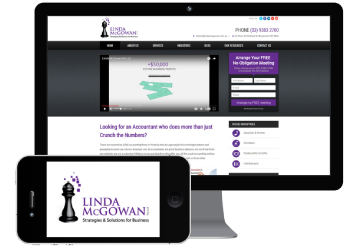Is Your Firm Growing Slowing or Going?
 The life cycle of an accounting firm is really no different to that of every person on this planet. Eventually they both will die. Sure, KPMG will live a lot longer than your average accounting firm but the collapse of my old employer Arthur Andersen & Co in 2002 proves even the ‘Big 6’ aren’t going to live forever.
The life cycle of an accounting firm is really no different to that of every person on this planet. Eventually they both will die. Sure, KPMG will live a lot longer than your average accounting firm but the collapse of my old employer Arthur Andersen & Co in 2002 proves even the ‘Big 6’ aren’t going to live forever.
Just like any type of businesses, every accounting firm goes through the start-up phase. It could be home based or a part time operation but in the embryonic stages we are inclined to take on any client provided they have a heart beat and a cheque book (or online banking these days). Next, on the back of hard work and awesome client service the referrals start to flow. In some cases we develop specialist services and target niche industries that fuel our growth. The firm continues to grow but eventually it hits a brick wall. For some sole practitioners this mark is $700k in fees but others crack the magical $1M mark before burn out, lack of resources or complacency takes hold. At this point of the maturity phase, fees start to flat line and the practice stabilises and becomes quite predictable.
From there, the firm can go two ways. It can have another growth spurt or it can enter the decline phase. Recently I have noticed a lot of firms move into the decline phase. These mature firms experienced exponential growth with the introduction of GST in 2000 and they enjoyed steady growth for a decade with many firms reaching maturity around the period 2010 to 2014. They are characterised by an ageing client base who have started to retire, sell their businesses and die. They are generally traditional accounting firms that simply offer tax compliance services and as a result they have started to lose clients to other firms that offer wealth creation services, run client seminars and have lead generation websites.
By contrast, the firms in decline have a ‘billboard’ type website (if they have one at all) and they almost exclusively rely on referrals. The problem is, a client base full of the baby boomer generation simply don’t refer like their younger Gen X and Y counterparts. They have their head in the social media sand and they aren’t actively involved in starting or buying businesses and investment properties. These services have fuelled the organic growth of small firms for decades. The final nail in their ‘coffin’ is they have failed to get with the online program. Marketing savvy firms have shifted their marketing tactics online while the others are blaming the economy for their lack of leads and referrals. They persist with offline tactics like Yellow Pages, local newspaper ads and flyers instead of shifting their focus to online tactics including Google searches, content marketing and social media.
BUY YOUR GROWTH?
According to many, the solution is to buy fees but … Houston, we have a problem. The baby boomer generation are hanging around longer than everyone expected and they are not selling their practices on the open market. In fact, in Victoria we have more than 220 registered buyers looking for fees in the range of $100k to $3M but virtually no supply. Buyers are getting frustrated sitting in a long queue while their fees continue to erode. To compound the situation, some of the stock on the market is a replica of their practice - an ageing client base with fees in decline. Of course, the lack of supply has also had an inflationary effect on prices.
If you’re a sole practitioner or the managing partner of a larger firm and you recognise the warning signs that you could be moving from the mature phase into the decline phase, it’s time for action. The value of your life’s work can diminish very quickly in this profession. Once the growth and profitability worms turn south, prospective buyers will gravitate away from your practice. Clearly, buying fees is not a quick fix and every firm (big and small) needs to get marketing back their 2015 agenda.






-P-J-Camm-banner.jpg)









Leave a Comment